For many travelers around the world, eating is half of the enjoyment of exploring new countries. One of the defining aspects of every culture is its food, and it can enrich the way you see local cultures and people, and can help to bond and get to know the locals. Indochina is one region of Asia where the tastes of the delicious foods can delight your palate.
Throughout the region, rice or noodles are usually the main feature of most dishes, and fish is a major part of their diet. Adding fresh local vegetables adds texture to the food, and a few spices and sauces direct the flavor. One of the best ways for Indochina tour is through its food culture, in the classic restaurants, the small local eateries, and the amazing night markets where the street vendors tempt you with delicious and aromatic delights.
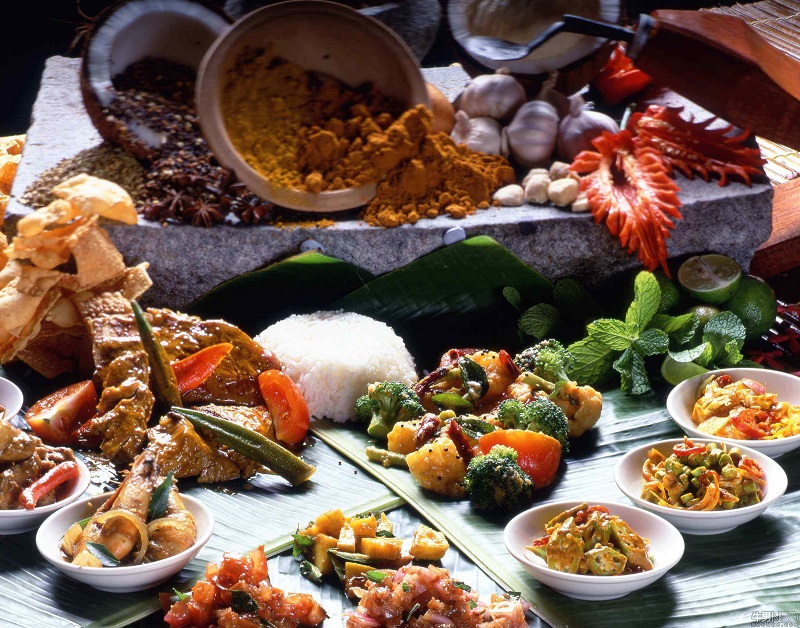
Mayanmar
For many years, Myanmar was a country that was closed to the outside world, but with its increase in tourism, it has become a popular tourist destination, allowing people to experience the rich, Burmese hospitality. Myanmar has various ethnic groups that have their own traditions and foods, and most flavors in Burmese cooking tend towards the salty and savory.
Rice dishes are common, with either meat or fish, and the curries are a little on the dry side, with several side dishes that often include salads, fried vegetables, and dips. Fish sauce and fermented seaweed (ngapi) often characterize local cuisine, and it has been hugely influenced by Chinese, Indian, and Thai cuisine.
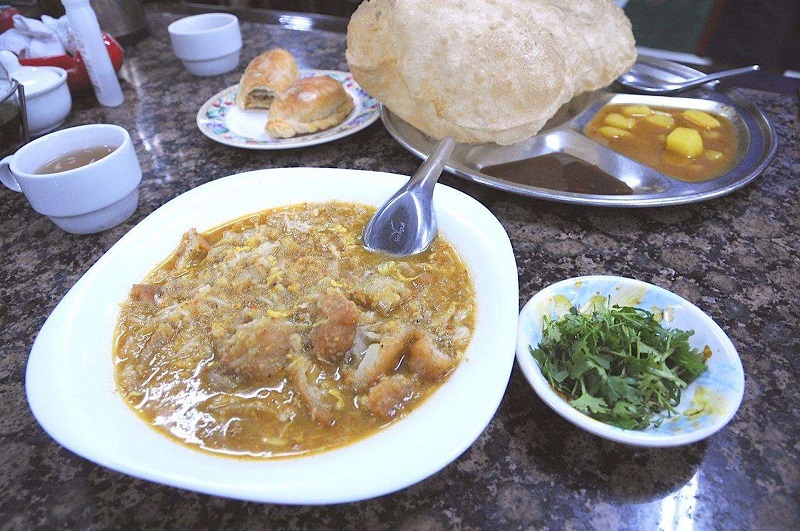
The traditional breakfast dish in Myanmar is known as Mohinga, a fish and shallot-based broth with noodles, topped with shredded banana heart. Other additions can include a hard-boiled egg or fried vegetables. Seafood is more popular in the coastal regions, while meats and poultry are more common in inland cooking. Shrimp and freshwater fish are also used in inland cuisine, especially near rivers and lakes, and are a major source of proteins. Many fish are salted and dried, turned into a salty paste for flavoring, or fermented into sauces.
Cuisine in Myanmar also includes many kinds of salads, with rice, wheat, or noodles, and ingredients such as kaffir limes, tomatoes, ginger, potatoes, long beans, and the popular Burmese delicacy, Lahpet, made from pickled tea leaves. In Myanmar there is a popular rhyme that translates as “Of all the fruit, the mango’s the best; of all the meat, the pork’s the best; and of all the leaves, lahpet’s the best”.
Thailand
Thailand is the place to visit if you like to turn up the heat a little. Majority of foods from Thailand are hot and spicy, but most places will accommodate you if you prefer it a little less intense. Thai cuisine uses a lot of fresh ingredients such as coriander and lemon grass, and rice is served with every meal.
thai food places a heavy emphasis on strong and aromatic ingredients with an attention to detail in textures, colors, taste, and intricacy. Many of the ingredients in Thai cuisine also have certain medicinal benefits and great care is given to the appearance, smell, and context of the dishes.
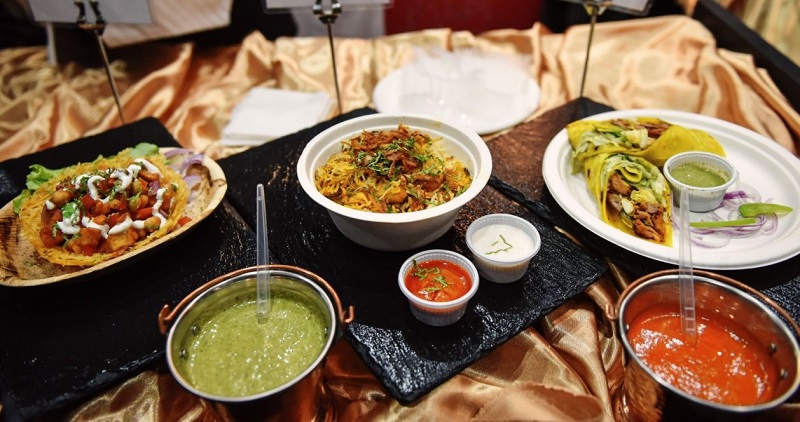
There are five main regional cuisines in Thailand that are incorporated to make up the total cuisine of the country as a whole. Thai cuisine has been greatly influenced by the foods and ingredients of its neighbors over the centuries, including China, Laos, India, and Malaysia. There is also a lot of chili peppers used in Thai cooking, which were first introduced to the country from America by the Portuguese in the 16th century. Spanish and Portuguese cooking has also has a slight influence on Thai foods such as foi thong, known in the west as “Angel Hair”, and made from strands of egg boiled in sugar syrup.
Traditional Thai cooking now incorporates all of these foreign influences with its own original cuisines, and is well known for mixing the textures and flavors of different dishes on one plate, and always with rice. Thai food was traditionally eaten using the right hand to ball the rice and dip it into the main dishes at the side of the plate, but spoons and forks are normally used now. Thailand has never used chopsticks, a utensil so indigenous to Asia, and it is only used now for Chinese, Japanese, and Korean foods in restaurants.
Cambodia
When traveling Cambodia, Cuisine is mainly a mix of Thai and Chinese flavors, although it has a lot less spiciness than Thai cuisine. The national dish of Cambodia is a delicious fish curry, and is made with a thick coconut sauce that is wrapped in banana leaves and steamed. Rice is the staple diet of Cambodians, and the average meal usually includes several dishes and has contrasts on the flavors, textures, and spiciness of the dishes.
Cambodian cuisine also uses a lot of herbs, leaves, pickled vegetables, edible flowers, garnishes, and condiments, and has dipping sauces on the side. Rice is often eaten throughout the day as snacks, and makes up for many of the tasty street snacks in Phnom Penh and Siem Reap, such as deep-fried rice cakes, rice noodle soup, and the rice porridge known as kuyteav. Plain white rice is also served with every meal, often with grilled fish, a soup, and a selection of different salad leaves, vegetables, and herbs.
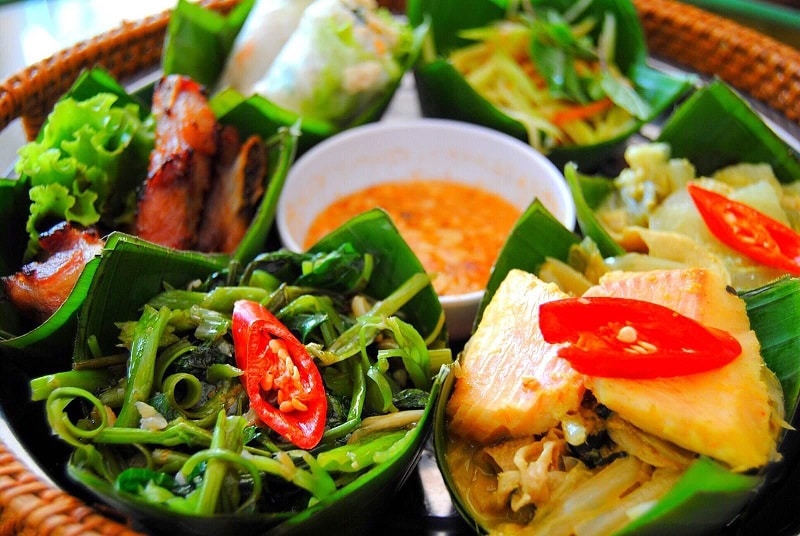
With the mighty Mekong River flowing through the heart of the country, Cambodian dishes often include fish, and the Tonle Sap Lake is a huge source of fish in the north of the country. Many of the fish dishes even look like the waters of a lake, with a pond-like appearance that includes reed-like plants, vegetables, and leaves. Even the dipping sauces are watery, as are majority of the local versions of curries.
Cambodian cuisine has been influenced mainly by Thai dishes, and the use of coconut milk is prevalent in many of the meat dishes. Cambodia is also the country that was most influenced by the French colonialism in Indochina, with the introduction of chili peppers and peanuts into Asia from the Americas. And while the chili never assumed the status it has in Thailand and Laos, some parts of the French cuisine have endured, such as coffee, pate, western vegetables, and the baguette.
Known as the “nom pang” in Cambodia, the baguette is eaten all over Cambodia today, and can be found in many homes and street foods. bread is eaten for breakfast with sardines, pate, or eggs, and served with strong coffee with sweetened milk, or eaten as a streetfood sandwich filled with ham or grilled meats, with Kampot peppers.
Vietnam
Vietnam has as many types of food as it has regions, and the food you get depends on which part of the country you are in. Chinese influence is heavy in the north of the country, and the French influence can still be found in some of the central and southern areas. The most famous dish in Vietnam is called pho (pronounced “fur”), and is a hot broth made with noodles, meat, and bean sprouts, with plum sauce sometimes added for extra flavor. Every region has its variation of pho, and the tastes vary all over the country.
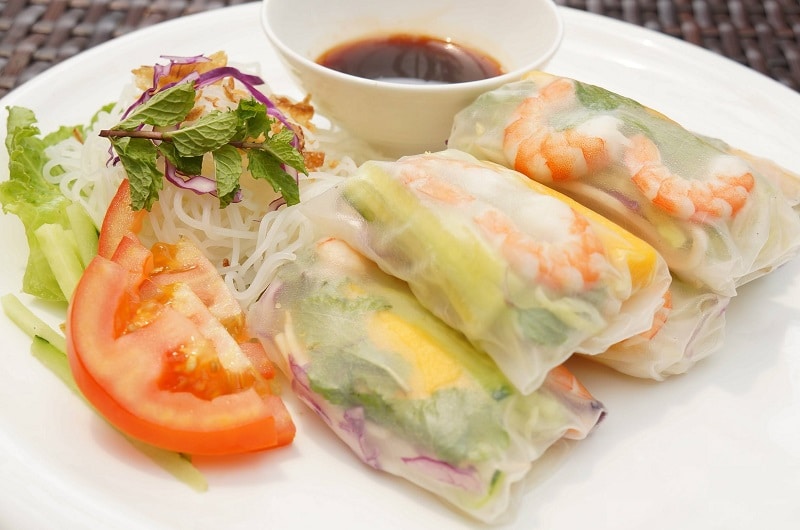
Every dish in Vietnamese cuisine has one distinctive flavor that reflects one of the five fundamental elements that are combined in the dishes. Many of the dishes use ingredients such as fish sauce, soy sauce, shrimp paste, fresh herbs, fruit and vegetables, and the ever-present rice. Lemongrass, coriander, mint, ginger, cinnamon, chili, lime, and basil are used in varying quantities and combinations in Vietnamese dishes, and it is widely known for its minimal use of milk and other dairy products.
Very little oil is used in the cooking, and the taste relies on the complimenting textures and flavors of the different herbs and vegetables. Often considered to be one of the healthiest foods globally, it is a balance between the meats and herbs, with a selective use of spices that give it a very refined taste. it is this balance of the five fundamental elements of wood, fire, earth, metal, and water, each of which corresponds to an edible ingredient, that applies to the composition of a meal to provide a balanced and beneficial diet for the body.
Laos
Spices in Laos are welcomed with open arms, and much of the food in the country includes a lot of chilies and seasoning. Laotian cuisine includes influences from Thai, Chinese, Vietnamese, and French cuisine, and there are several colonial introductions that have been incorporated in the local dishes.
The national dish in Laos is called Laap, which is a salad made from minced meat or fish, with vegetables. garlic, lime juice, powdered rice, chilies, and onions add a varied mix of flavors to the dish, giving it a strong and spicy flavor.
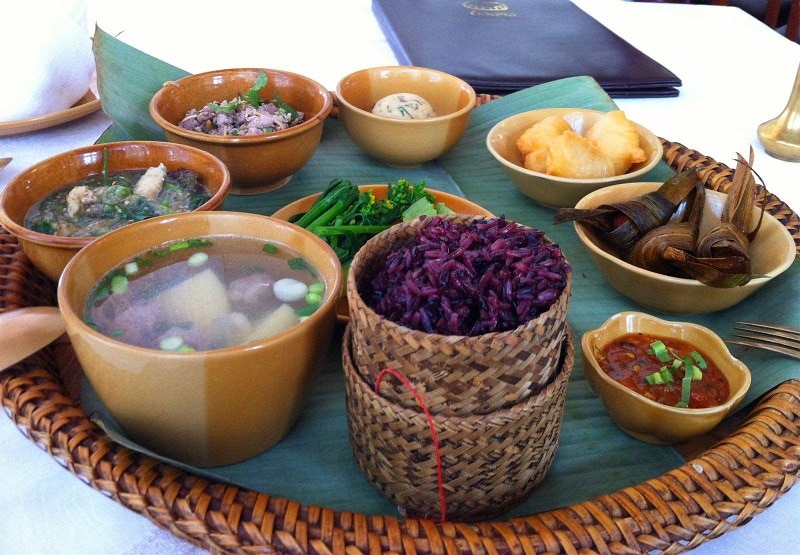
Sticky rice is the staple diet of the Laotian people, and it is normally eaten using the hand. The people of Laos actually eat more sticky rice than anywhere else in the world, and it is the essence of Lao cuisine. Lao people often refer to themselves as “luk khao niaow”, which means “children of the sticky rice”. Fermented fish sauce, a common ingredient throughout Asia, is also one of the most important ingredients in Lao cooking.
Lao cuisine has local variations in every region of the country, depending on the fresh foods and vegetables that are available in each region. And Vientiane is the second biggest seller of that French legacy, the baguette, which is sold as sandwiches on the street and in restaurants all over the city.














